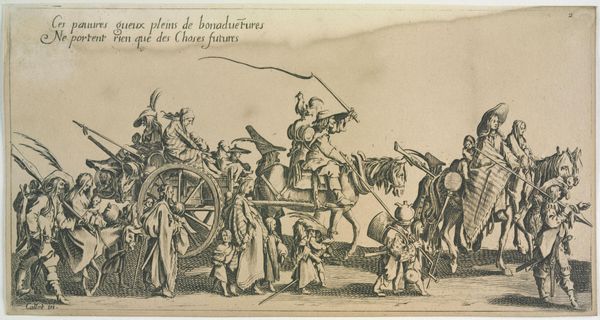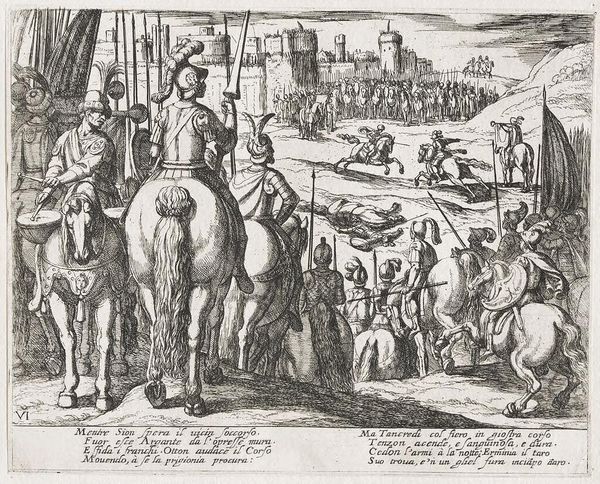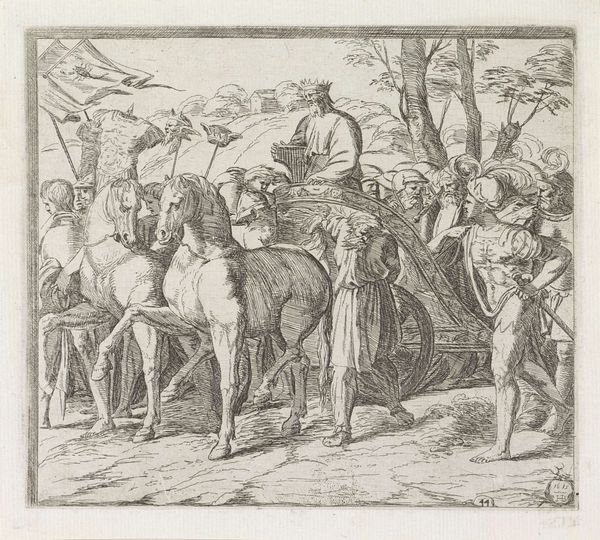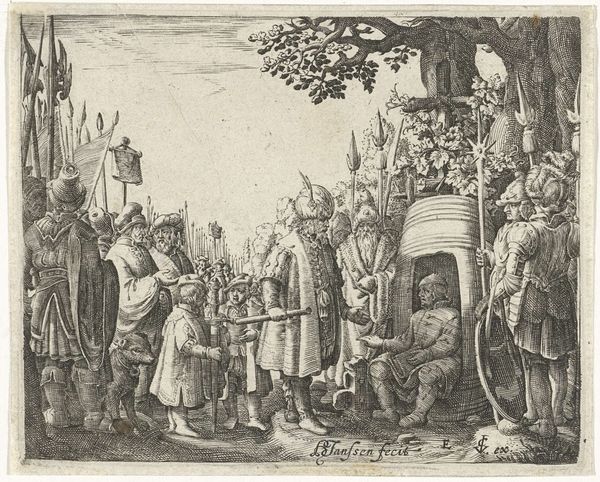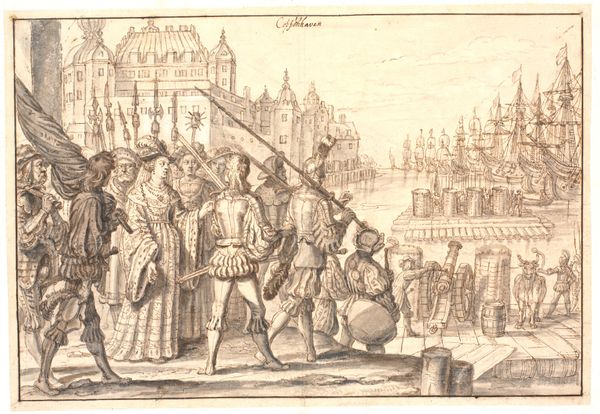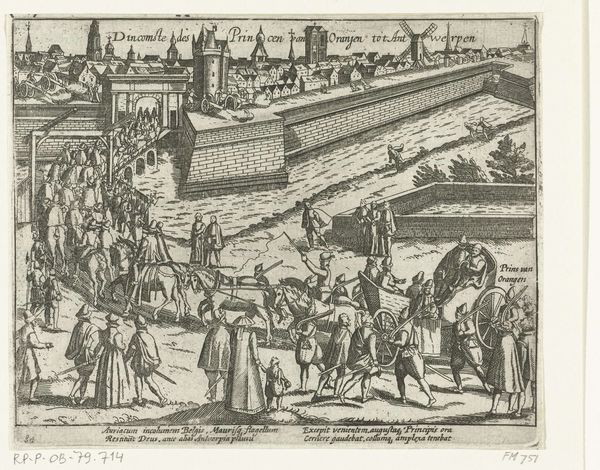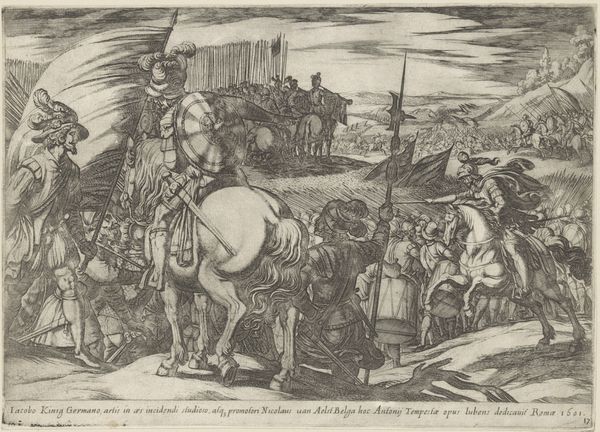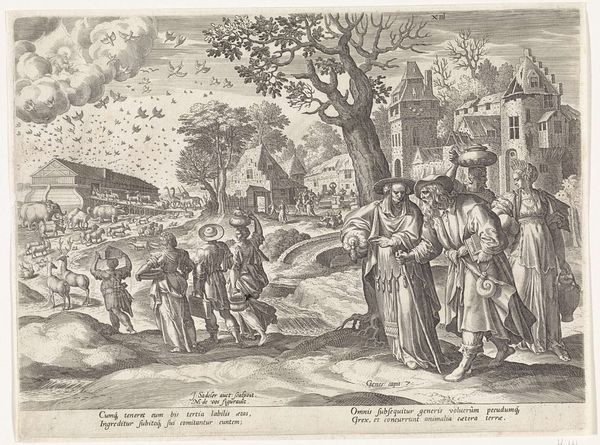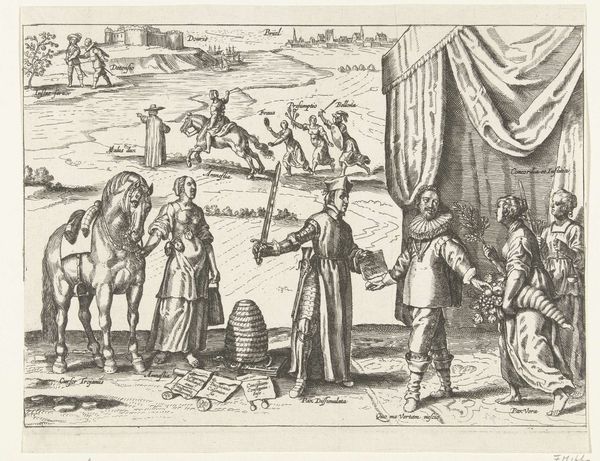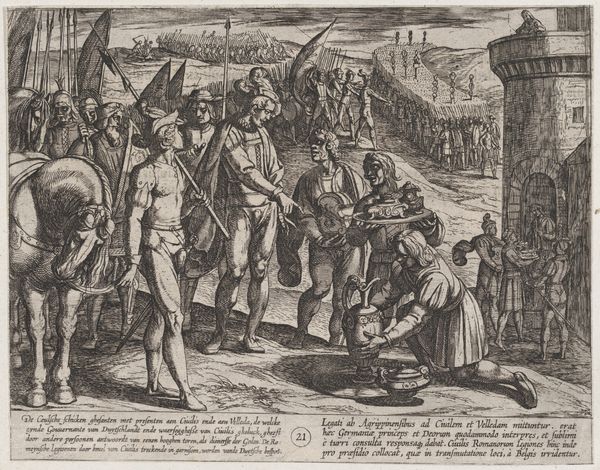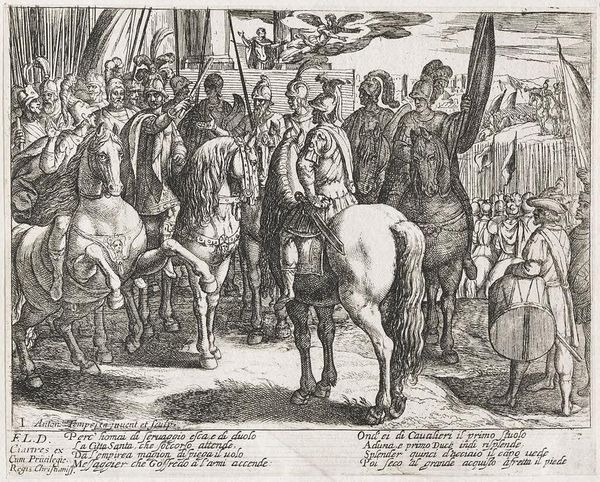
drawing, print, ink, pen, engraving
#
drawing
#
ink drawing
#
narrative-art
#
baroque
# print
#
pen illustration
#
pen sketch
#
ink
#
pen
#
genre-painting
#
engraving
Dimensions: height 271 mm, width 415 mm
Copyright: Rijks Museum: Open Domain
Curator: This detailed 1618 engraving, titled "D'Arminiaensche dreckwaghen," currently resides in the Rijksmuseum collection, and while we don't know for sure who created it, it depicts a rather curious scene, wouldn't you agree? Editor: Indeed. It's brimming with sharp detail, though initially rather unsettling. There’s a claustrophobic feel to the crowded figures crammed in the wagon. Curator: That wagon, or 'dreckwaghen,' quite literally a 'dung wagon' it's an intentional construction, highlighting the period’s turbulent religious conflicts—specifically targeting the Arminians during the Synod of Dordrecht. Editor: Absolutely. Considering the sociopolitical implications of depicting Arminians on what amounts to a garbage truck, the image communicates deep social prejudice and a clear bias. The symbolism speaks volumes about the social devaluation projected onto a particular religious group. Curator: Note how the composition reinforces this. The wagon itself is crudely constructed, drawn by horses bearing labels: "love" and "zeal" - mocked. Each passenger likely representing key figures or problematic tenets within the Arminian movement at the time. It’s quite loaded in its materiality, the pen and ink mimicking the quick and easy distribution of political pamphlets. Editor: Exactly, and notice the figures outside the wagon—they seem to represent contrasting ideologies observing, judging, solidifying a dominant perspective, almost as if normalizing public ridicule. What do you make of their specific costumes or gestures? They speak volumes about societal power dynamics. Curator: It shows us that materials aren't neutral carriers of meaning but tools wielded within power structures. It demonstrates how quickly ideas – dangerous, dissident ones – can spread within printmaking’s accessibility. The ink itself became an agent, reproducing this bias for wider circulation. Editor: I agree completely, the way it so readily conflates identity with disparagement. That's still very present, isn't it, as an underlying problem that stretches into current sociopolitical divides? The engraving, as a material object, carries an indictment through centuries of intolerance. Curator: Indeed. The detailed pen work shows us that there was great care taken with conveying that negative view. Editor: Ultimately, looking closely shows how prejudice, hate, even satire is processed, distributed and made visible with a pen, a piece of paper, a press, an image. That such processes remain powerfully, disturbingly, relevant speaks to its ongoing resonance.
Comments
No comments
Be the first to comment and join the conversation on the ultimate creative platform.
